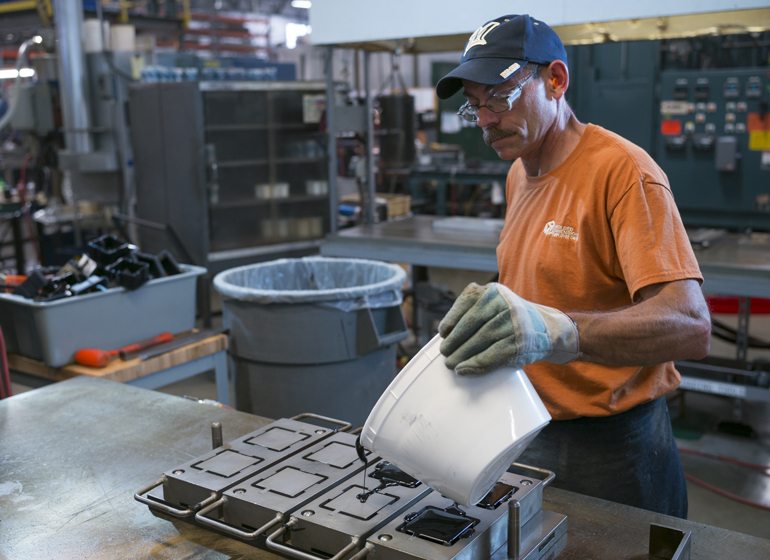Molded Dimensions Inc.
701 W. Sunset Road, Port Washington
Industry: Molded rubber and polyurethane parts
Employees: 95
www.moldeddimensions.com
The list of industries served by Molded Dimensions Inc. is long, with nearly 60 listed on the company’s website. Walk the floor in the company’s Port Washington plants and the diversity of customers is clear. Around one corner, there are parts for a fire extinguisher; around another, there are turf care components. Look elsewhere, and there are parts for medical fields and oil and gas exploration.

“For the size business we are, we are incredibly diversified,” said Michael Katz, president of Molded Dimensions.
The materials – rubber or polyurethane – and the volumes – low or medium – are the constants.
Having a high level of diversification is part of Molded Dimensions’ strategy to “create a place where great people choose to work,” said Katz, who bought the company with his wife, Linda, in 2001.
The strategy recognizes people want to work at a place that’s growing, but as it does for any company, diversifying allows Molded Dimensions to weather economic cycles in various industries.
“It turns out that great people don’t like to work at a place that’s growing ridiculously, because they kind of know that lots of times that tempers and so we focus on steady, good growth,” Katz said.
The business still goes after growth, with a particular focus on new product introduction. Molded Dimensions builds about 120 new molds each year and is nearing a point where it will add additional engineering help in the next year.
“We want to be the best at new production of any of your suppliers, because we do think that 95 percent of quality and efficiency is defined at product concept,” Katz said.
Keeping all of the work straight is actually easier than it might seem, partially because of how the company is physically set up. Rubber-related work is done in one building, while another building on the main campus houses all of the polyurethane work. Katz said it would have been less expensive to add on to the rubber building when the company expanded in 2008, but a separate building keeps each division focused.
While it might be tempting to turn to metrics and data to assure the hundreds of different parts are produced efficiently, Katz said productivity is driven by the company culture and a 37 percent minority stake in ownership for employees. That’s not to say metrics aren’t used; rubber molding machines prominently display target and actual production numbers and other processes have their own measures, with the goal of handling a part the fewest possible times.
“Everybody who comes to work today wants to know how well they worked today and if they can’t look and measure themselves, that’s not fair,” Katz said, adding metrics are more for individual employees to know their performance. It also gives those in production an indication if they should go to their supervisor with concerns about how something is designed or set up.
“Problems bubble up when you’re given that feedback,” he said.
The result is two focused factories supported by overarching sales, engineering, accounting and IT departments. Molded Dimensions also has a tooling division located nearby, along with a warehouse for its GlocalSource division.
In the early 2000s, nearly every customer the company called on was asking for work to be completed in low-cost countries, Katz said. Molded Dimensions started GlocalSource as a way to capture some of that business, partnering with Chinese manufacturers and a joint venture in India to source certain parts.
The program represents about 10 to 15 percent of the business and usually has about 20 projects a year. It works particularly well for easy-to-ship parts made with high labor content from relatively simple materials.
Customers have occasionally sought to get products that don’t fit the GlocalSource criteria, but Katz said it is important to stay focused. The benefit for the customer is the opportunity to draw on Molded Dimensions’ design and engineering expertise for parts that may be made overseas anyway.
“We’re about taking what the customer’s idea is, whether it’s a napkin sketch or a 3D model, and feeding back to them ways that we can make that part … the most robust way with the most robust tool for the least amount of cost,” Katz said.